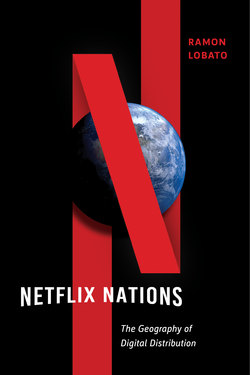Читать книгу Netflix Nations - Ramon Lobato - Страница 7
На сайте Литреса книга снята с продажи.
ОглавлениеPREFACE
International television flows (“travelling narratives” in my re-definition) can be seen in a new light … as flows of symbolic mobile and mobilizing resources that have the potential to widen the range of our imaginary geography, multiply our symbolic life-worlds, familiarize ourselves with “the other” and “the distant” and construct “a sense of imagined places”: in short, to travel the world and encounter “otherness” under the protection of the mediated experience.
—Milly Buonnano, The Age of Television: Experiences and Theories, 108–109 (emphasis in original)
As Milly Buonnano reminds us, watching television always involves some kind of imagined interaction with faraway places, situations, and symbols, in a way that recalls the word’s etymological origins (“tele-vision”: seeing at a distance). This idea of television, as an inherently international medium characterized by a particular way of ordering space, is at the heart of this book. In what follows, I revisit some long-standing debates in television and global media studies to see how they can help us understand the rapid transformations that are taking place as television morphs unevenly into an online medium.
Think of this book as an internet-era update to the rich literature on international television flows—a book for cord-cutting students and scholars who are interested in this longer history. Our central case study is Netflix, the world’s largest subscription video-on-demand service. We will examine how Netflix morphed from a national media company to an international one between 2010 and 2016 and consider what this case means for existing debates about global television on the one hand and digital distribution on the other.
Both topics are of personal interest to me. I grew up in Melbourne during the 1980s and 1990s, watching a lot of television. Australia is a country where the local is always experienced alongside and through the imported—mostly American and British popular culture, but also some European and Asian content. Television has always been an international medium here. Local sitcoms share the schedule with U.S. network series, Hollywood movies, BBC telemovies, and (on our public-service channels) the occasional Japanese cooking show or German police drama.
Australian television was broadcast-only until the 1990s. Even now, most Australians do not have cable or satellite subscriptions (though they are prodigious users of digital services, including pirate networks). In the late 1990s, I traveled overseas for the first time and observed the many ways that people watch television in other countries. Staying with relatives in Spain, I watched episodes of Ally McBeal in a dual-language track (a fascinating novelty to me but unremarkable to my Spanish cousins). In Morocco, I had my first taste of satellite TV, watching The Simpsons in French, courtesy of my friend’s rooftop satellite dish. These were instructive experiences for someone used to Australia’s five-channel TV environment—an environment that now seemed rudimentary compared to the denser distribution landscapes available overseas.
All this got me thinking about the relationship between television distribution, space, and culture. These issues would stay with me as a background fascination for many years while I researched in other areas, including film distribution and piracy, before returning to the topic of television when I started teaching classes on global media. Conversations with my students—who had many fascinating views to share on evergreen topics such as local content and cultural identity, and who themselves watch TV in the most diverse and interesting ways—prompted me to think once more about the difference that space makes to television culture. This book is the outcome of those many class discussions, filtered through the debates about streaming that were exploding around us when Netflix came to Australia, belatedly, in 2015.
The impact of Netflix in Australia was immediate and profound. Within a year, Netflix had attracted as many subscribers as our pay-TV service, Foxtel, which has been operating for more than 20 years (Roy Morgan Research 2016). Roughly one in three Australians now have access to Netflix at home (Roy Morgan Research 2017). Even before the service had officially arrived, thousands of Australians were using VPNs (virtual private networks) to illicitly access the U.S. Netflix library. Overall, the demand for Netflix in Australia has been remarkable.
This is certainly not the case everywhere—indeed, this book is substantially about Netflix’s failure rather than its success in various markets around the world. Nonetheless, I found the experience of seeing a national television market so rapidly and thoroughly transformed by a foreign entrant affecting on many levels. This encouraged me to think more about the political, economic, and cultural impacts of streaming services. It also made me curious about connections between these services and the longer history of transnational television distribution via satellites. These were the fascinations that stayed with me as I wrote this book—a work of theory and analysis, based on a case study of a single platform, that explores the conceptual implications of internet distribution for global television studies.
There are many aspects of the topic that I have not been able to cover in depth here—including Netflix’s original production strategy, which really deserves its own book. I am also aware that much of what I have discussed may have shifted by the time this book appears in print. Given these constraints of space and time, the book does not claim to offer a comprehensive account of Netflix—and it is certainly not an insider account (c.f. Keating 2012). Instead, it offers a selective analysis of what I see as the most important issues raised by Netflix’s internationalization. The landscape will continue to change around us, but I hope these underlying issues will endure as central concerns for critical media scholarship.
